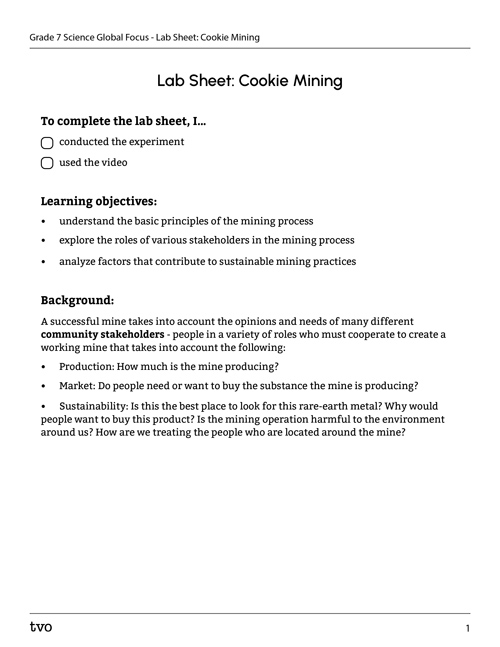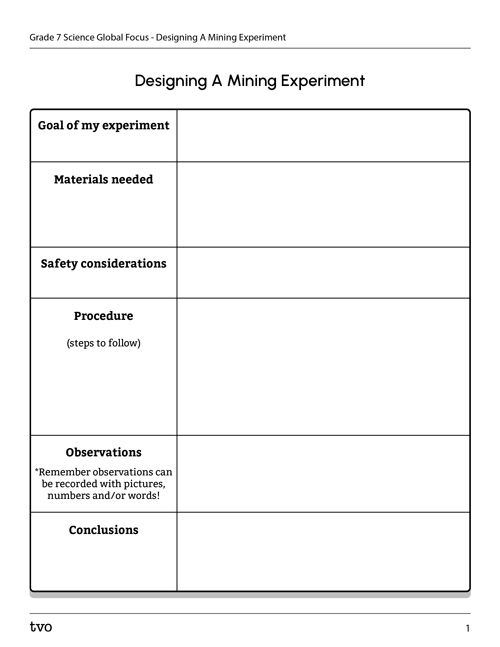Minds On
Earth metals
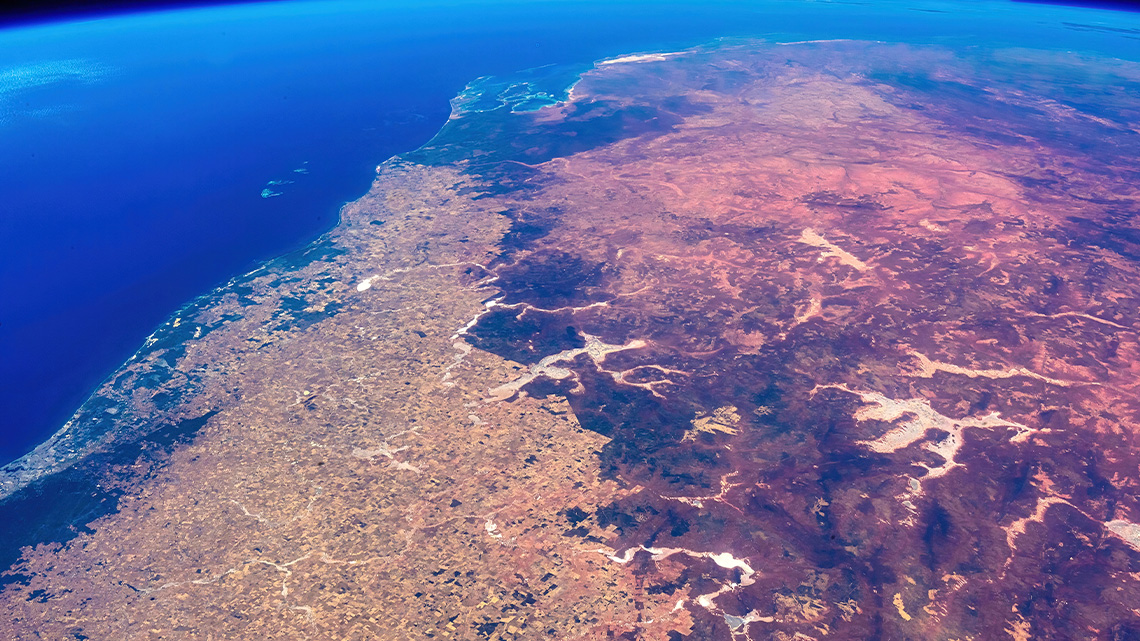
What are rare-earth metals?
Rare-earth metals are a group of metals that have similar chemical properties and are found in the same ores.
Millions of years ago, they were a part of the Earth’s mantle, but have been pushed over time to the crust of the Earth.
Check out the following video clip that explores an excavator that is mining for lignite coal. This coal contains rare-earth elements.
Brainstorm
Brainstorm
Let’s brainstorm about the following questions:
- What do miners do?
- Why do you think we mine rare-earth metals?
Record your ideas in a notebook or another method of your choice.
Action
Global mining
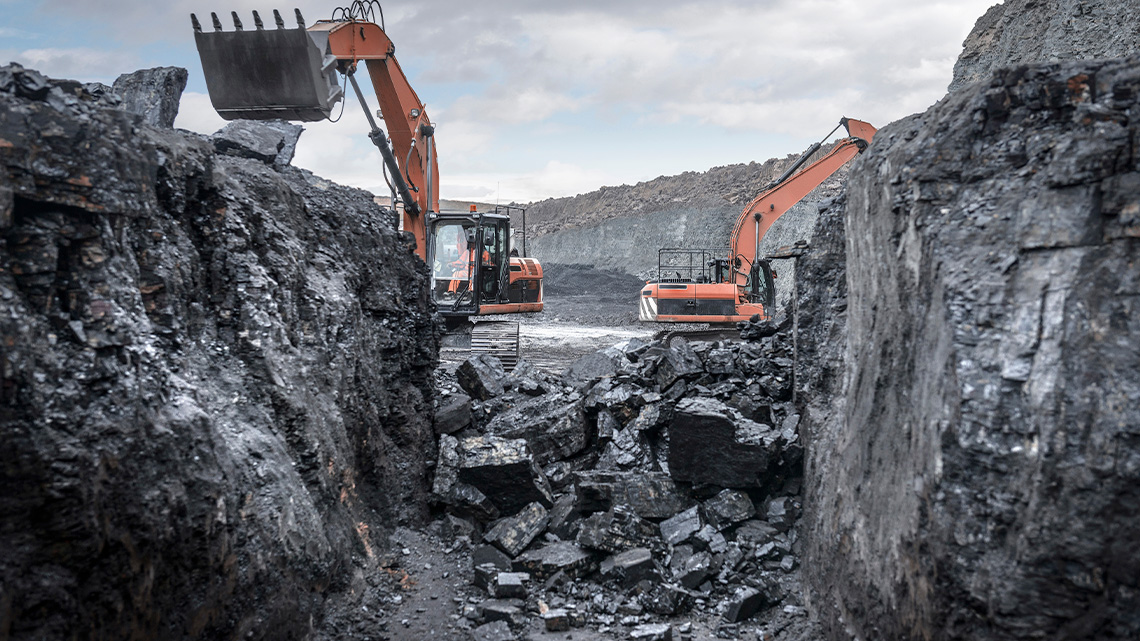
Before beginning to investigate mining in more detail, let’s explore a few key vocabulary terms that we will notice throughout the learning activity.
What is mining?
Mining is the process of extracting useful materials from the Earth. Mining dates back to prehistoric times.
Miners are often in search of rare-earth metals and minerals that are considered very valuable.
Press the following tabs to explore two major types of mining.
Surface mining is when the ground is blasted so that ores near the Earth’s surface can be removed and taken to refineries to extract the minerals. Surface mining is usually more destructive to the surrounding landscape, and leaves a huge open pit behind.
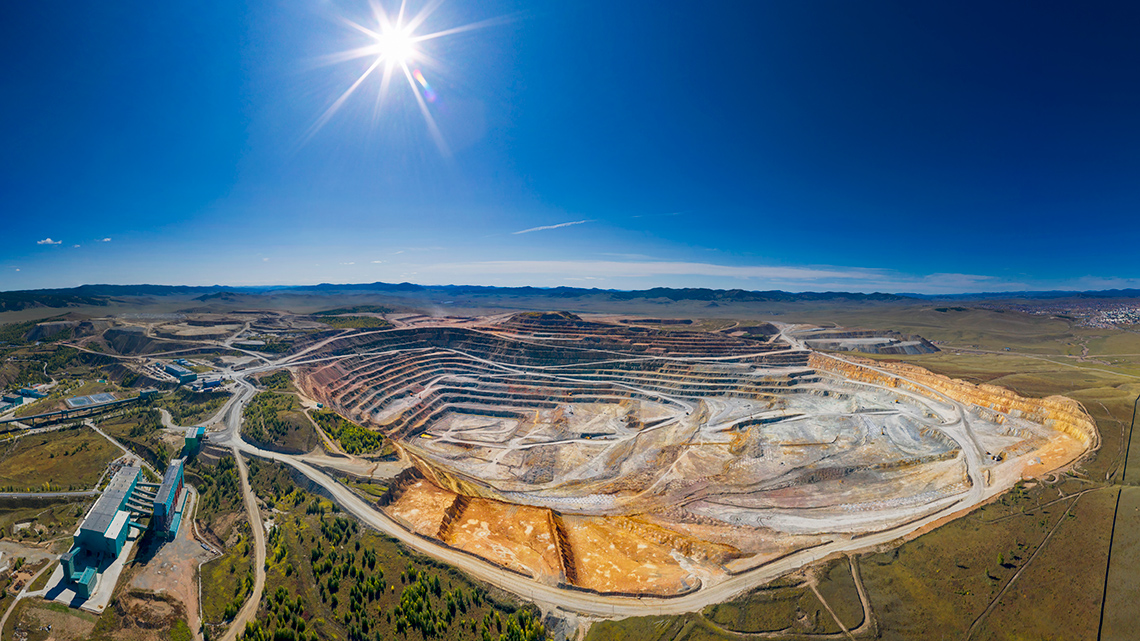
Underground mining is where the ores are removed from deep within the Earth. Miners blast tunnels into the rock to reach the ore deposits far below the ground.
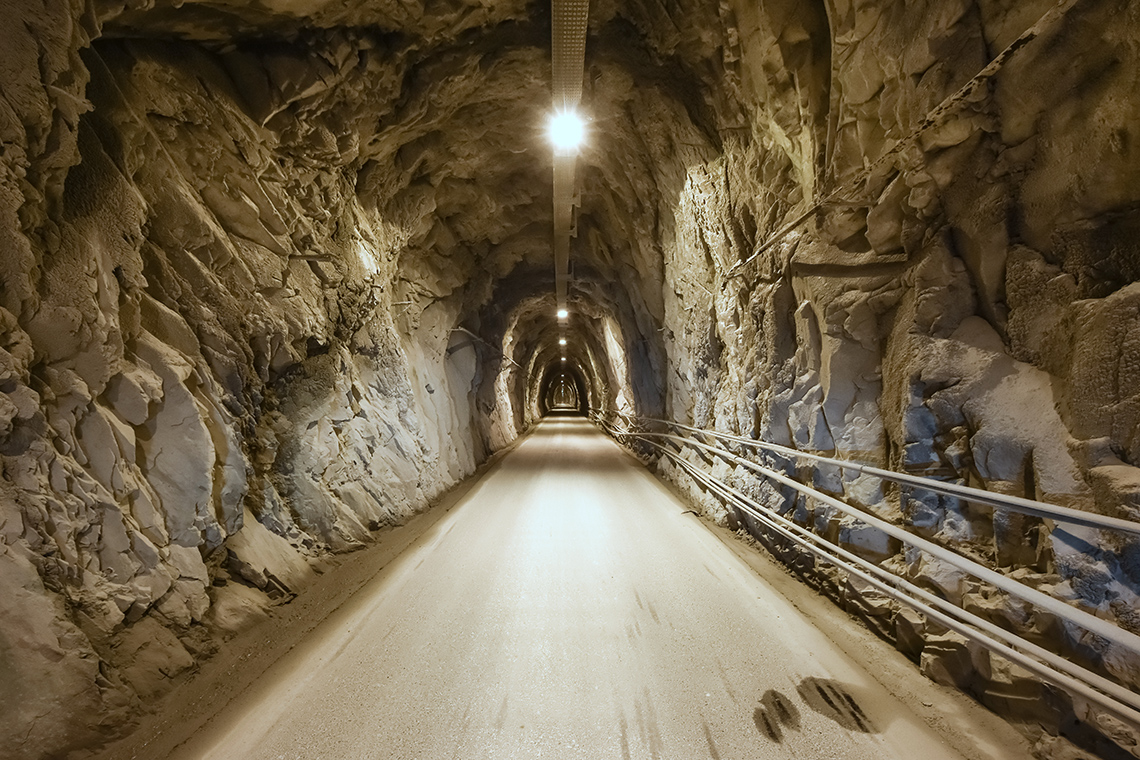
Did You Know?
Did you know?
Mined materials were among the first materials that were traded. Trading required humans to improve their communication skills.
The earliest mine was in Southern Africa, approximately 40,000 years ago – mainly copper (Cu), but also gold (Au), silver (Ag), and mercury (Hg) were mined at this time. Approximately 5500 years ago, tin (Sn) was discovered. When mixed with copper, it made bronze, which is one of the hardest metals.
As mining developed more and more as an industry, people began to develop civilizations around mines. Mined materials were used to make the necessities of life and provide the resources communities used for money.
Rare-earth metals, as their name suggests, are difficult to get.
They are only needed in small amounts and can be mixed with other metals to be very valuable in producing electronic devices.
Explore the following image to learn more about the exclusive list of rare-earth metallic elements.
 Description
Description
This is a special version of the classic periodic table of elements that highlights the 17 rare-earth metallic elements that are clustered around the centre and defined by the atomic numbers 21, 39, and 57-71. The elements that are highlighted are as follows: lanthanum (La), cerium (Ce), praseodymium (Pr), neodymium (Nd), promethium (Pm), samarium (Sm), europium (Eu), gadolinium (Gd), terbium (Tb), dysprosium (Dy), holmium (Ho), erbium (Er), thulium (Tm), ytterbium (Yb), lutetium (Lu), scandium (Sc), and yttrium (Y).
Environmental impact
The mining process is harmful to the environment in a few different ways. When rare metals are unearthed, moved, and crushed in mining operations, it creates a dust in the air that causes air pollution that affects human health.
Mines often use heavy machinery and require roads to be built to access the mining cite. The construction of mines often causes wildlife to relocate, damages or destroys habitats, and pollutes drinking water.
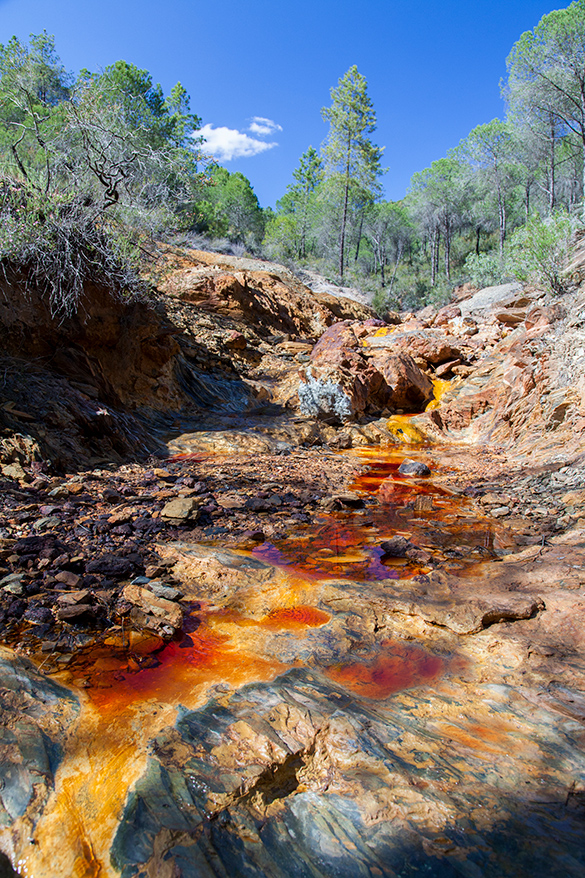
The water in the Rio Tinto River, Spain, has a rusty hue from acid rain drainage.
Mining creates a pollution that is known as “acid mine drainage.” This damages plants and animals that live in the water. Along with this, the disposal of mine waste can also cause severe water pollution from toxic metals, which can be harmful to the health of people and animals if they are released into nearby bodies of water.
Chemicals that are used to separate valuable metals and minerals from ore might also leak into streams, rivers, and groundwater. Some of these chemicals, like mercury, can be poisonous when leaked into drinking water supplies.
Lastly, mines generate hazardous and toxic waste that is not always disposed properly.
Learning check!
For each sentence, select the missing word from the drop-down menu.
Task: Let’s mine!

Mineral crystals are spread throughout rocks and ore. It is difficult to locate the minerals within the rock or ore without finding a way to separate the minerals out of the rock or ore.
To develop our understanding of rare-earth minerals and how to separate the mineral from the ore, it is important to experience the extraction and separation of a natural resource.
For this task, choose one of the following options:
- Option A: Cookie mining experiment
- Option B: Design your own extracting and separating experiment
Option A: Cookie mining
In this activity, you will experiment by mining a cookie. By examining how the cookie crumbles, it is possible to better understand how soil and land are broken into pieces due to human mining activities.
Before beginning the experiment, let’s explore this video to learn more about the steps of the Scientific Experimentation Process.
Safety
Before you explore the following experiments, let’s perform a safety check.
Hands-on Science
Cookie mining
For this experiment, we will be learning about the mining process.
Complete the Lab sheet: Cookie Mining in your notebook or using the following fillable and printable document. If you would like, you can use speech-to-text or audio recording tools to record your thoughts.
Press the following tabs to access the materials needed and experimental procedure for the Cookie Mining experiment.
If you do not have access to materials, access the “Video demonstration” tab to explore the experiment in action. You can use the video to make your observations and draw your conclusions.
You will need:
- chocolate chip cookie
- stopwatch or timer
- toothpicks
- paper clips
- pencil/marker
- piece of grid paper (or any scrap paper and create a grid on it)
- play money worth $20.00 (or similar currency, like 20 raisins or chocolate chips)
For this activity, the cookie is the “land” you are mining.
- Begin by tracing your cookie onto the piece of paper with the pencil or marker
-
You are the mining manager, which means you are responsible for all of the decisions regarding the mine. Choose your mining equipment:
- $3.00 for one toothpick
- $4.00 for a paperclip
- Count all the squares on your grid paper that the cookie covers. Any partially covered squares should be counted as full squares. The cookie outline represents the local community and the environment that your mine is affecting. This also shows the amount of space you need to put your cookie back into for reclamation. The more pieces that end up outside the mine, the more money it’ll cost to reclaim.
-
Check out the mining rules:
- You cannot use your hands to hold the cookie.
- You can only use the mining equipment you bought to touch/hold the cookie throughout the entire mining process.
- Each chocolate chip you mine is work $1.00. You can combine partial pieces to make a whole chocolate chip.
- Every five minutes you mine for costs you $2.00, so mine efficiently!
- At the end, you have to put the cookie back together with mining tools – no hands allowed!
- Begin your timer, and start to mine for chocolate chips. Keeping the rules in mind, continue mining until you think you have mined a sustainable amount of chocolate chips.
- Pick up the cookie and put it back in it’s original space. If it’s not all in one piece, it will cost you $3.00 to reclaim your mining land. If your cookie has crumbled a lot because of the chocolate chips you have removed, it means your mining caused environmental damage. Once you’ve pushed it all back into the circle – every square covered by broken cookie outside your circle costs another $3.00.
- Record how much money you have left.
Check out this video to explore a demonstration of the Cookie Mining experiment.
Please note that the materials and procedure in the video may vary slightly from what is listed in the previous tabs.
Option B: Design your own experiment
Design an experiment that demonstrates the process of mining, separating, and extracting rare-earth metals.
Press ‘Hint’ to access an additional detail.
You may refer to and consider the steps explored in Option A to guide your thinking.
Consider the following checklist to guide your thinking and experiment design.
I can design my experiment by:
Complete the Designing A Mining Experiment in your notebook or using the following fillable and printable document. If you would like, you can use speech-to-text or audio recording tools to record your thoughts.

Science is about reflecting and reimagining. Was your experiment successful?
Is there anything that you would change about your experiment design to improve it or the outcome?
Even if your experiment was not successful, what did you learn or confirm about the topic you were investigating?
How did this exploration help you understand the process of separating and extracting rare-earth minerals?
Record your ideas in a notebook or another method of your choice.
Global connection

The United Nations (UN) is a group of many countries from around the world that have come together to create a better future for people and the environment. They have created 17 goals called the Sustainable Development Goals.
This learning activity is connected to Goal #11: Sustainable Cities and Communities. This means that our cities and communities should be inclusive, safe, resilient, and sustainable. Communities that are not sustainable can lead to pollution, unrest, insecurity, lack of economic growth, and more.
Sustainable mining
The act of separating minerals from rock creates a great deal of waste.
There are ways that waste can be reused. One way is to use the waste rock in construction sites when they need to add materials in an area to prevent soil erosion. This waste can also be recycled for projects, like road construction.
Sustainable careers
Mining companies have many different employees, and as is the case with many industries, sustainability is currently a top concern for those working in this field.
Press the following tabs to access a few sustainable mining careers.
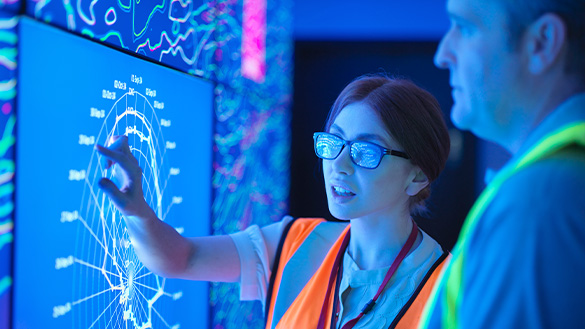
A geological engineer is a person who designs mines that remove minerals in a safe and efficient way. These engineers need to search for minerals and evaluate the area as a possible location for a mine.
A few key points about this occupation:
- designs open-pit and underground mines
- considers ways to transport the minerals to the plants that process them
- monitors the production to assess how effective it is
- provides solutions to issues involving reclaiming land, water pollution, air pollution, and sustainability
- makes sure that the mine is operating safely for the miners and the environment around it
- develop new equipment to separate minerals from dirt, rock, and other materials
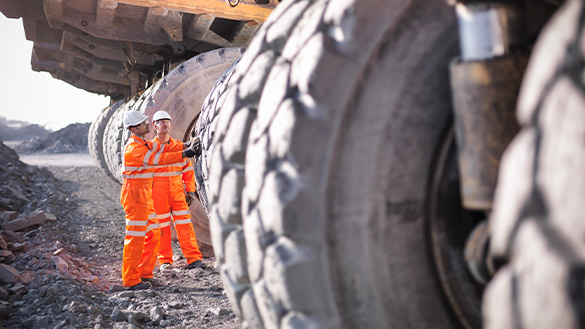
A mining safety engineer assesses the safety of a mine. They do inspections of mines to ensure that they meet the expectations. They check if the equipment is safe. They also create and present mine safety courses for those who work in the mines.
Their main job is to keep miners safe. They do this by:
- checking the land around the mine and the quality of the air in and around the mine
- inspecting the structures in and around the mine and investigating the safety of the mine
- helping mining companies select safe locations for underground and surface mining
- using computer programs and hardware to help solve problems, make decisions, and gather important information
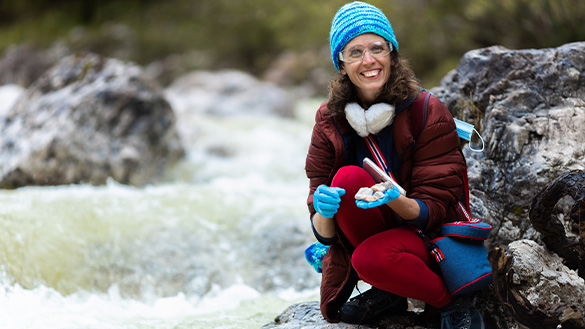
A mineralogist studies rocks, minerals, and gems and their properties. They study and determine the physical and chemical properties of minerals, how to effectively retrieve them from ores, and how to process the minerals.
Mineralogists, who work for mining companies:
- perform chemical, heat, and other tests on minerals, rocks, and gem samples to identify them and their properties
- improve the processing of minerals from ores, being sure that it is safe and efficient
- monitor the collection of samples, their preparation, and the analysis process
- help to recover the minerals and report their data
- sometimes work at sites where they extract the minerals, and follow safety rules and procedures as they work
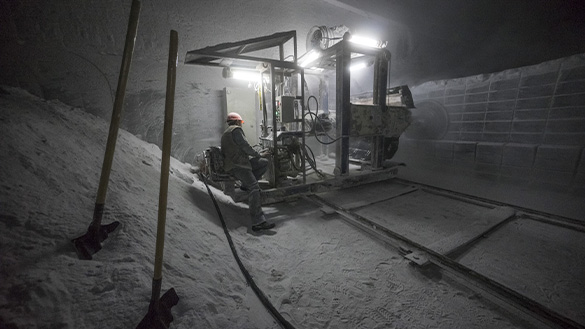
Drillers and blasters work closely together and can perform both drilling and blasting responsibilities in a mine.
The drillers operate the machines that bore holes in open-pit mines and holes for blasting. Blasters fill holes with explosives and detonate the explosives to loosen coal, rock, and ore. Both of these roles are important to mining companies. Safety is really important to both of these roles.
Their responsibilities also include:
- conducting tests to determine which explosives can do the job effectively
- working machines that drill and blast
- inspecting the tools and equipment used to do their job to the best of their ability
After exploring the various mining careers, choose one or two of the careers that are of interest to you.
Consider the following:
- How can this role reduce the negative impacts of mining on the environment?
- How does this role rely on technology?
- How important is safety to this role while at work?
Complete the Researching A Mining Career in your notebook or using the following fillable and printable document. If you would like, you can use speech-to-text or audio recording tools to record your thoughts.
| Questions | Responses |
|---|---|
| What career did you choose? Describe the career. | |
| How can this role reduce the negative impacts of mining on the environment? | |
| How does this role rely on technology? | |
| How important is safety to their role while at work? |
Press the ‘Activity’ button to access Researching A Mining Career.
Pause and Reflect
Pause and reflect
How can the career in mining that you explored possibly lead to more sustainable mining practices for rare-earth minerals?
Record your ideas in a notebook or another method of your choice.
Consolidation
Review your learning
Let’s review what we have learnt about mining as it relates to sustainability.
Select the correct answer, then press ‘Check Answer’ to see how you did.
Making connections
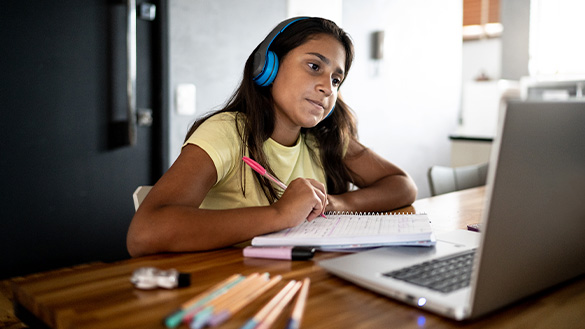
Let’s reflect on the following questions:
- How does mining affect the environment and communities surrounding the mine location?
- What is one way that mining of rare-earth minerals can become more sustainable? What needs to be in place for this to happen?
- Could there be a way to separate the minerals from the rock or ore in a sustainable way?
Be sure to make connection with the information from this learning activity to support your responses. Record your ideas in a notebook or another method of your choice.
Reflection
As you read the following descriptions, select the one that best describes your current understanding of the learning in this activity. Press the corresponding button once you have made your choice.
I feel…
Now, expand on your ideas by recording your thoughts using a voice recorder, speech-to-text, or writing tool.
When you review your notes on this learning activity later, reflect on whether you would select a different description based on your further review of the material in this learning activity.
Press ‘Discover More’ to extend your skills.
Discover MoreExtracting resources
Always be sure to do your safety checks before any experiment!
Please note: The following mining simulation would require someone (other than you) to prepare your ‘mining site’ ahead of time.
Check out the Extracting Resources Guide to explore and conduct an optional experiment.
|
Learning objectives:
Engineering connection: As resources around the world begin to diminish, engineers are always exploring sustainable ways to do more with less. In all designs, engineers consider the pros and cons of using renewable and non-renewable resources. |
||
|
Objective: The object of this experiment is to recover as many resources (beans) as possible during each “work day” while keeping the sand in the mine.
Note: Before you begin, have someone else (perhaps an adult at home or your teacher) prepare the sand and bean mixture for you. Thoroughly mix the beans and sand so that some beans are visible, but others are buried. |
||
| Materials | Mining Worksheet | |
|
You will need:
|
Workday | Number of Beans Extracted |
| 1 | ||
| 2 | ||
| 3 | ||
| 4 | ||
| 5 | ||
| 6 | ||
| 7 | ||
| 8 | ||
| 9 | ||
| 10 | ||
|
Follow-up questions:
|
||
|
Graphing: Graphing: Use the data in your table to graph the number of beans you recovered each day. You can create your graph digitally or in print. Be sure to include:
What is the shape of your graph? |
||
Press the ‘Activity’ button to access Extracting Resources Guide.
